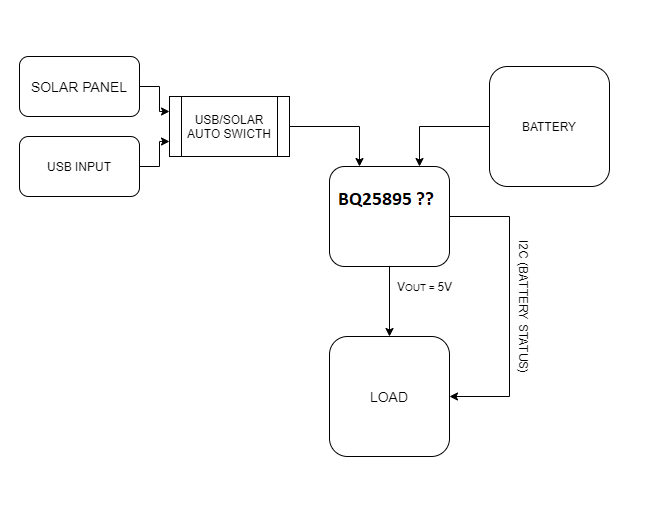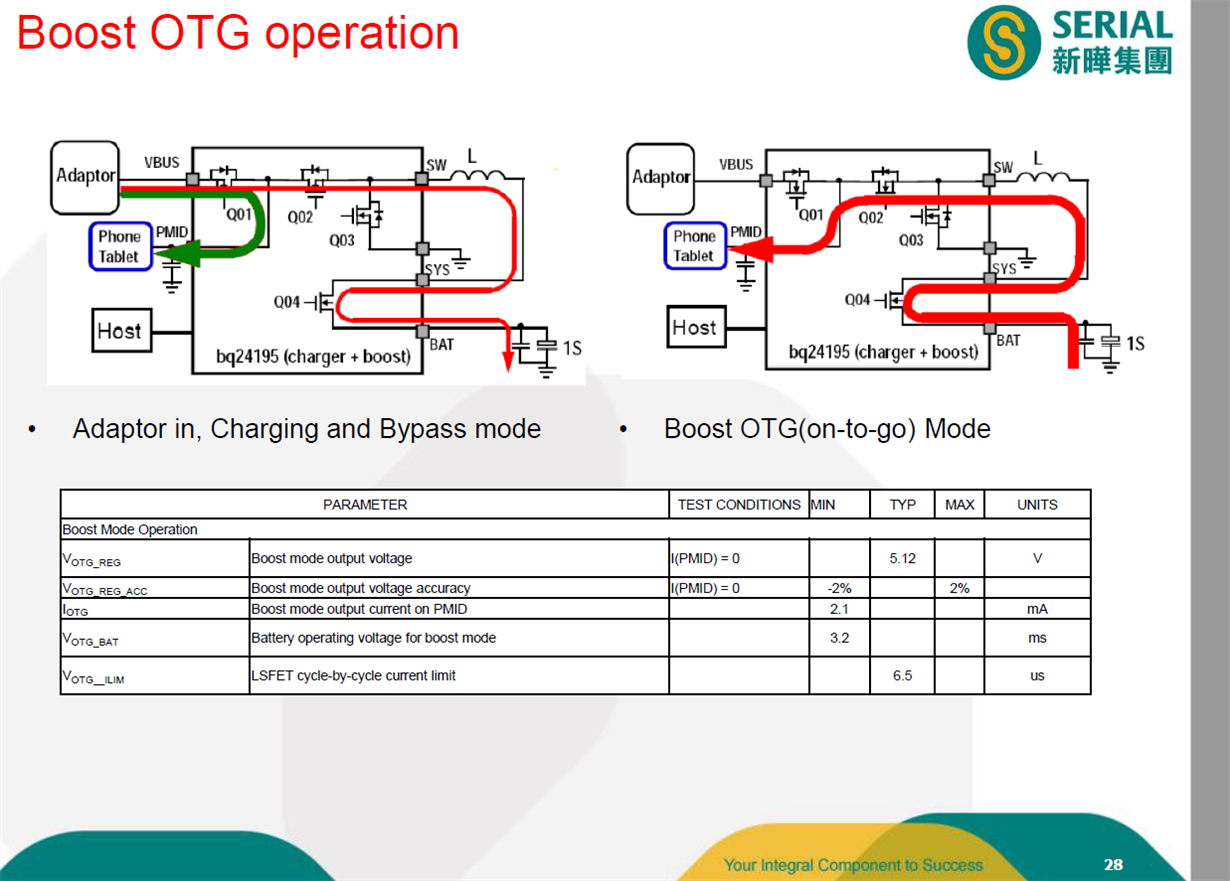Other Parts Discussed in Thread: BQ25985, CC2541, TIDA-01556, TPS2121
Dear All,
- There should be 5-5.2V, 2-2.5A output at the output.
- I want to monitor the battery status.(I2C)
- I should be able to charge the input with solar or 5V usb.
- Load spends 500-600mA in normal operation and and spends around 1-5mA in sleep state.(The device will mostly be asleep.)
- I'm using a 3.7V (2x2500mA) Li-on battery here. Since the device will be constantly outside, I want it to work much longer by charging with solar as the device will be constantly outside.
- I mostly like using TI products and I did some research. I am considering using BQ25895 on my own product, but I am looking for answers to some of my questions.
Q1) When load 5.2V , 500mA, battery and solar input are on;
- What happens if solar power is greater than output power? (is the battery charged? or Where will the load be fed?)
- What happens if solar power is less than output power? (the battery will be activated automatically? I want it to enter the device should not shut down.)
Q2) As a continuation of question 1, as far as I can read, we can use mppt with BQ25895. What panel should I use for mppt?
Q3) When load 5.2V , 1-5mA, battery and solar input are on;
- What happens if solar power is greater than output power? (is the battery charged? or Where will the load be fed?)
- What happens if solar power is less than output power? (the battery will be activated automatically? I want it to enter the device should not shut down.)
Q4) I think the min input current for bq25895 is 64mA, so what should I do with mppt can I get over 64mA current?
For example, let's say I get 20-25 mA from the solar input. the system also uses 5mA. will excess power go to the battery in this case? does itmake sense to use a solar panel or my method may be wrong? May be the question I am most curious about.
I simply drew the scheme I wanted to use. Is BQ25895 a product I want
The first time I am trying to design such a system. Can you help in detail I don't want to skip any small point.
Regards,
Mehmet




